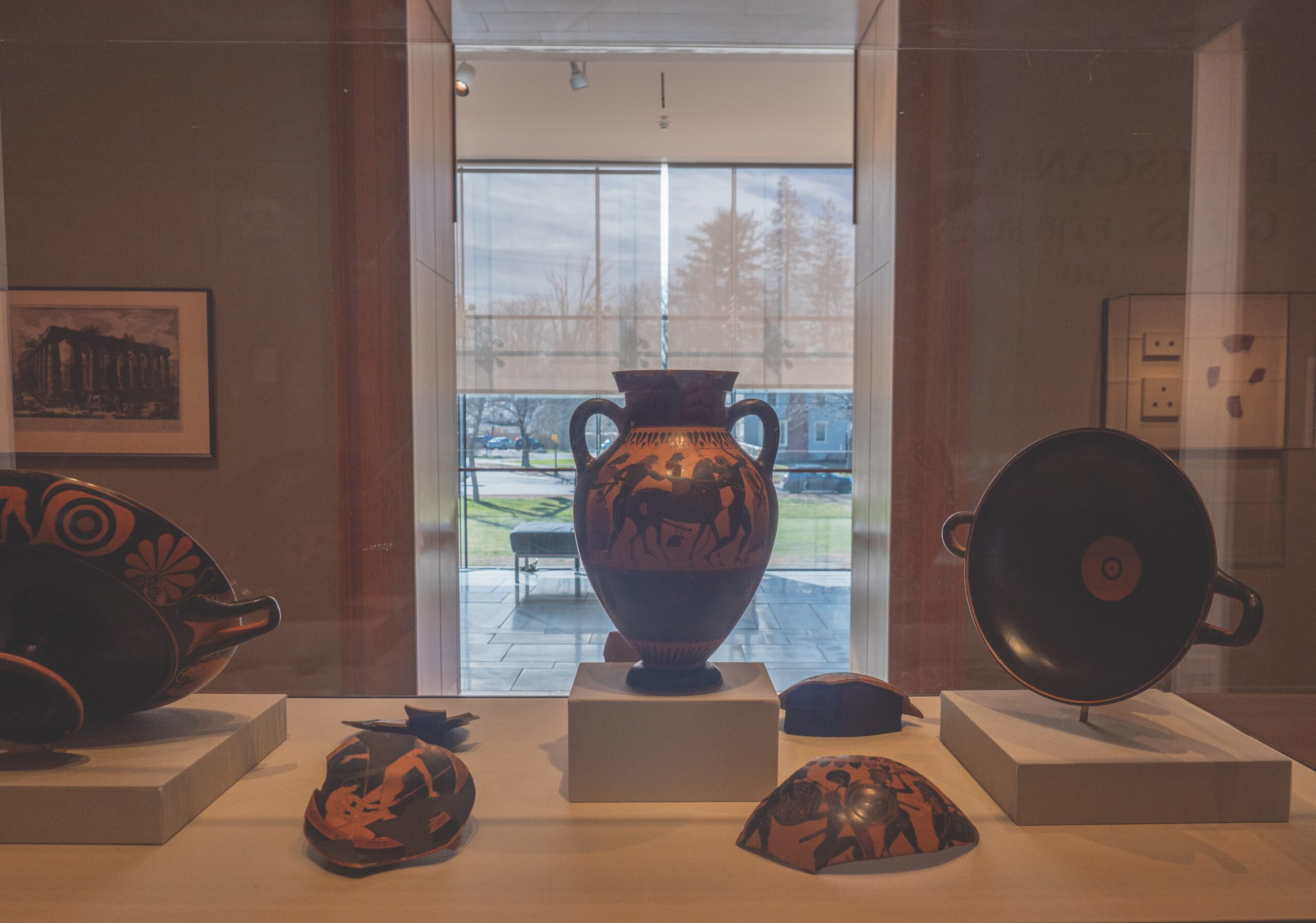BCMA, Higginbotham unearth “Etruscan Gifts”
April 26, 2024
 Alex Spear
Alex SpearAlmost all that the Etruscans left behind was left in their graves: Little else of their civilization remains. Scholars know they were fantastic plumbers—they built the first major sewer in what is now Rome, known as the Cloaca Maxima, and drained much of the swamp where the city now stands. Historians also believe it was from the Etruscans that the Romans derived the tradition of gladiatorial showdowns, although for the Etruscans they were a religious sacrifice rather than sport.
However, the knowledge that they were advanced plumbers and enjoyed gladiator battles reveals little about the everyday lives of the Etruscan people who flourished in what is now central Italy from around 900 BCE until the first century BCE when they were assimilated into Roman society. To find more about these ancients, archaeologists have turned to their graves and the objects buried within them. These objects are the focus of “Etruscan Gifts: Artifacts from Early Italy in the Bowdoin Collection,” which opened in February at the Bowdoin College Museum of Art (BCMA).
The exhibition contains various artifacts from the museum’s collection, almost all of which were excavated from Etruscan graves in central Italy. Most of the works in the exhibition are earthenware of the kind that have helped historians better understand the values and lives of Etruscans and their interactions with surrounding civilizations. Associate Professor of Classics and BCMA Curator for the Ancient Collection James Higginbotham curated the exhibition and hosted a lecture and gallery walk in the museum on April 18.
“[The Etruscans] were and continue to be relatively enigmatic. They are even somewhat confused with mythological figures,” Higginbotham said during the talk. “There are certain things that the Romans begrudgingly attribute to the Etruscans, but we lose their language, we lose the details of their culture. But the Etruscans are a people who help us understand the evolution of cultures in ancient Italy.”
At the beginning of Etruscan civilization, they developed advanced techniques in metalworking, fueled in part by the abundance of metals in the Etrurian hills. These natural resources and high-quality metal products caught the eyes of the surrounding civilizations.
“All of a sudden they explode artistically onto the stage,” Higginbotham noted. “The Etruscans begin to acquire imports from the Greek world that they will in turn trade for with their natural resources. They become rich, they become a society that becomes very hierarchical, [and] they build cities … and extend their control of a big piece of Italy including a little spot that will become the city of Rome.”
According to Higginbotham, breaching into larger trade networks led not only to a transfer of goods, but also to a transfer of beliefs and culture—much of the red-clay pottery and other objects featured in “Etruscan Gifts” depict Greek mythology. The exhibition gallery contains a series of metal statuettes depicting the Greek hero Herakles, including one dressed in Etruscan clothing.
Much of Etruscan culture remained distinct. They traveled often, had a strong maritime tradition and the Greeks and Phoenicians considered them to have “backwards” gender roles.
“When looking at pottery that have depictions of male and female roles, [one can see how] the Greeks were very clear in how the gender interacted, whereas the Etruscan women and men were much more on an equal playing field,” Higginbotham said. “In ancient times, the Greeks in particular, saw the Etruscans as strange. They talked about them as pirates … and dismissed them for a time.”
Not only did they dismiss the Etruscans, but when the Greeks expanded into the lower reaches of the Italian peninsula, fierce territorial competition sprang up between the two civilizations. Accounts of these interactions only come from Greek sources; the Etruscans’ language and culture were lost as they assimilated into Roman civilization.
BCMA Co-Director Anne Collins Goodyear said in an interview with the Orient that “Etruscan Gifts” attempts both to bridge these gaps in knowledge and acknowledge that much of the Etruscans’ history remains unknown.
“This show assesses the culture of everyday antiquity as well as forcing us to question our objects of the here and now,” Goodyear said. “Our collection of mid-Mediterranean antiquity objects … [gives] us an amazing opportunity to not only think about western civilizations and what we know about them, but also ponder the mysteries and acknowledge the truth that holes in our knowledge exist.”

Comments
Before submitting a comment, please review our comment policy. Some key points from the policy: